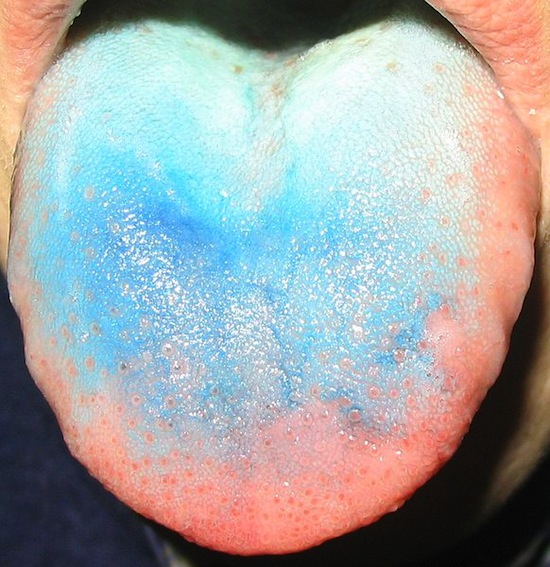Did you ever see little children walking around with multicolored faces after eating some ices or candy that stains their mouth? I just cringe when I see this. And I want to ask the mother why she lets her children eat that toxic junk. But I control myself, smile and walk away. I guess I am just different. When my son was little I never gave him such things. Am I a killjoy? I don’t think so.
As dangerous as these food additives and food dyes are chemically, it is much more dangerous in what it is teaching children. It teaches children to think that brightly, artificially colored foods are better for them, because it is attractive to them. These is how childhood obesity starts.
Two studies have been published in a British medical journal that concluded that food dyes can stimulate hyperactivity in children who had no known behavior problems before. Do we really need studies to know this? I guess so. We need studies so that concerned parents can go before congress and diligently show that “science” backs up their common sense and common knowledge. Then and only then can we ask that congress ban the use of these potentially carcinogenic and neurotoxic substances from food.
In 2009, the European Parliament required foods containing the six tested dyes to carry a label warning that products “may have an adverse effect on activity and attention in children.” Isn’t that reminisant of the warning on a pack of cigarettes? However, to avoid warning labels on their products in Europe, many foodmakers — including U.S.-based companies such as Kellogg and Mars International — replaced the six dyes with other dyes, including some natural ones made from fruits and vegetables. Wouldn’t it make sense to use dyes made of all natural substances all the time? The problem with natural coloring is that is it not as vibrant as artificial and it fades after a while. In addition it is more expensive to use natural colorings.
It’s all in the hands of the powerful food corporations and the Food and Drug Administration. That worries me. But now, at least we have science on our side. In fact, this has been taken seriously and a Food and Drug Administration advisory committee will begin a review of the research on the behavioral effects of artificial dyes. This is significant because previously the FDA denied that dyes have any influence on children’s behavior. An FDA staff report released last week concluded that synthetic food colorings do affect some children. Hallelujah!
As early as 1906, congress was considering whether or not artificial dyes were bad for us. More recently, in 1960, congress banned color additives that caused cancer in humans or animals. Red dye #3 was found to cause thyroid cancer in rats. However, lobbyists for the fruit cocktail producers were successful in keeping it in the food supply, and banned red #3 only in cosmetics and topical drugs. This is an example of how the FDA protects the public from harmful substances.
Three of the most widely used dyes; red#49, yellow #5 and yellow #6 were found to harbor likely human carcinogens in the early 1990’s. However the synergistic carcinogenic potential of multiple dyes has never been tested. And there are many products that utilize more than one color, for example M & M’s and other candy. I just don’t understand why we need food colorings at all. They sure look cool on Easter eggs, but why do we have to eat it? Teach your children to appreciate the vibrant colors in nature by presenting them with natural, real food.
See Follow-up to this article here.
Resources:













